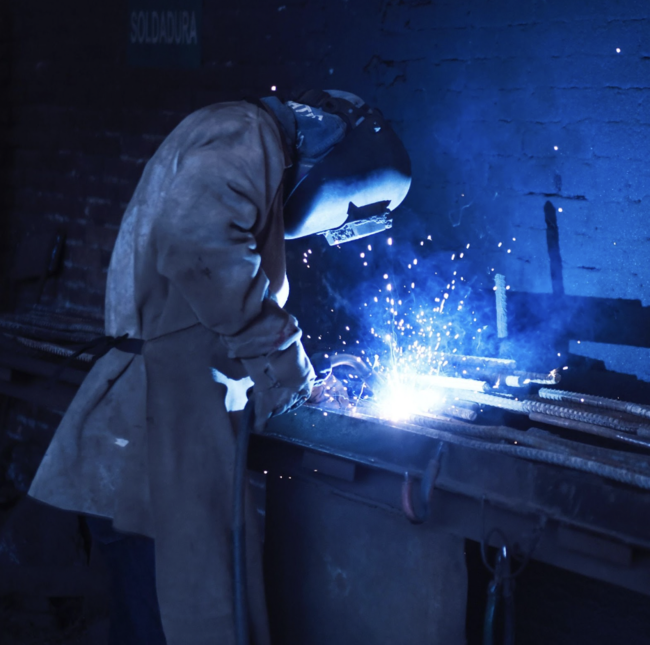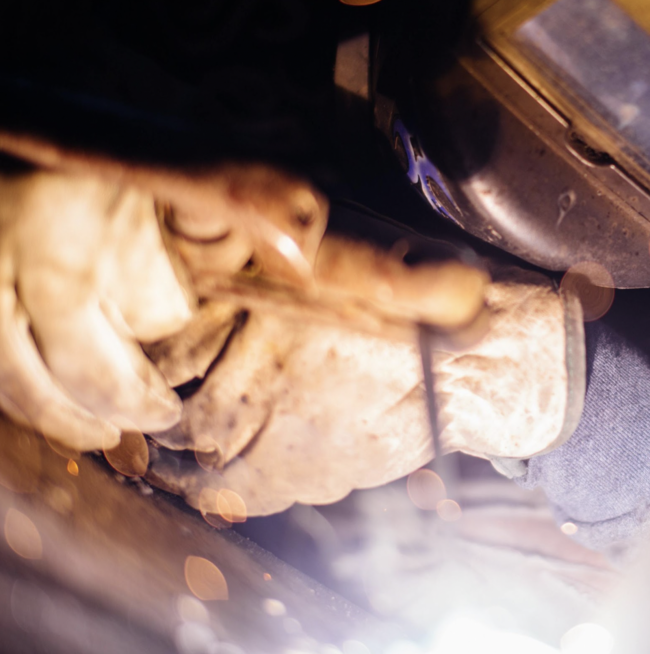Blog
Robotic Welding Vs. Manual Welding: Pros and Cons

Automation has engulfed almost all areas of manufacturing, and welding is not an exception. The popularity of robotic welding has grown a lot in the last few years, overshadowing conventional welding machines. Robot-assisted welding surely offers a great deal of automation and allows for increased throughput. However, manual welding using welding machines should not be discarded. Manual welding is still a preferred type of welding due to its greater flexibility and awareness. In this blog, we review the pros and cons of manual and robotic welding.
Robotic vs Manual Welding
Robot-assisted welding can be fully or semi-automatic welding. In completely automated welding, a robot operates the entire welding process, from loading the material and controlling the process to unloading the finished piece. In semi-automatic welding, a welder is responsible for setting up the robot before welding and loading the material. A welder is also responsible for controlling the process, so if something goes wrong or an adjustment is needed, a welder can interrupt the welding process.
Pros of robotic welding
As mentioned before, manual welding is still a preferred type of metalworking in many industries. However, robotic welding also has several advantages. Let’s look into them further:
- Improved weld quality. With the help of electronic weld process controllers, welders can maintain the integrity of the welding process, therefore, ensuring better weld quality.
- Less welding spatter. Robotic welders boast high efficiency as they are more accurate and create less spatter.
- Increased throughput. Robotic welders can work faster and for extended periods compared to human welders. This means that a robotic welder can finish work faster and manufacture a greater amount of units in a given period.
- Decreased labour costs. One of the main reasons why robotic welders were invented was to save labour costs for manufacturers. In this sense, both fully and semi-automatic robot welders can help businesses save on labour costs.
Cons of robotic welding
- Cost. Robotic welders are an investment, so you need to be ready to pay a considerable amount of money upfront for a robotic welder. Some welding equipment manufacturers offer leasing or financing options for businesses to be able to afford the robotic equipment.
- Reliability. Relying on robotic welding in full is risky as you need to have a substitution that can keep the manufacturing process going in case your main robot welder needs repairs.
- Limited flexibility. Robotic welders are not the best choice for manufacturing products in small quantities as you will need to reconfigure your robot for every new project. In this case, manual welding would be a preferred type of welding.

Pros of manual welding
Manual welding has many advantages too. Here are some of them:
- Awareness. Human welders are more likely to spot problems during the welding process as well as on the manufacturing floor. A robotic welder will continue working until something causes it to malfunction.
- Replaceability. If one of your welders is unable to work on a project, you can delegate the job to another employee. This gives you peace of mind that the project will be completed on time.
- Flexibility. Human welders, especially experienced ones, know their job from A to Z, so they can adapt to any changes in the manufacturing process quickly and easily. Robotic welders, instead, need to be recalibrated to every other job requirement and this takes time.
Cons of manual welding
- Speed. The manual welding process can’t compete with the robotic one when it comes to manufacturing speed.
- Safety. The safety risks during manual welding are always higher as humans can get easily hurt if safety procedures are not followed.
The takeaways
Almost every (if not all) business owner looks to optimize their manufacturing process to achieve higher production speed and increased profits. However, integrating robotic welders into the production flow is not the ultimate solution most of the time. The amount of flexibility of manual welding cannot be compared with that of robots. Besides, some highly skilled welders can produce nearly as neat welds as robotic welders do. Ultimately, it’s not only about the quantity but also the quality of the products you make and sell to your customers.
When deciding whether or not a robotic welder is worth the investment, review your project needs carefully and compare the profits that you might make with the initial capital on procuring a robotic welder. All in all, it could turn out to be more cost-effective to invest in a quality welding machine and hire a skilful welder rather than buy a robotic welder.
Lock 8 is a one-stop welding supply store with shops in Port Colborne and Stoney Creek in Ontario. We have a wide range of quality welding equipment for sale and rent. Whether you are looking for a welder machine for home use or for a wide range of equipment to supply a construction project, we have everything you need. Get in touch with us today to learn about all products and services we offer.



